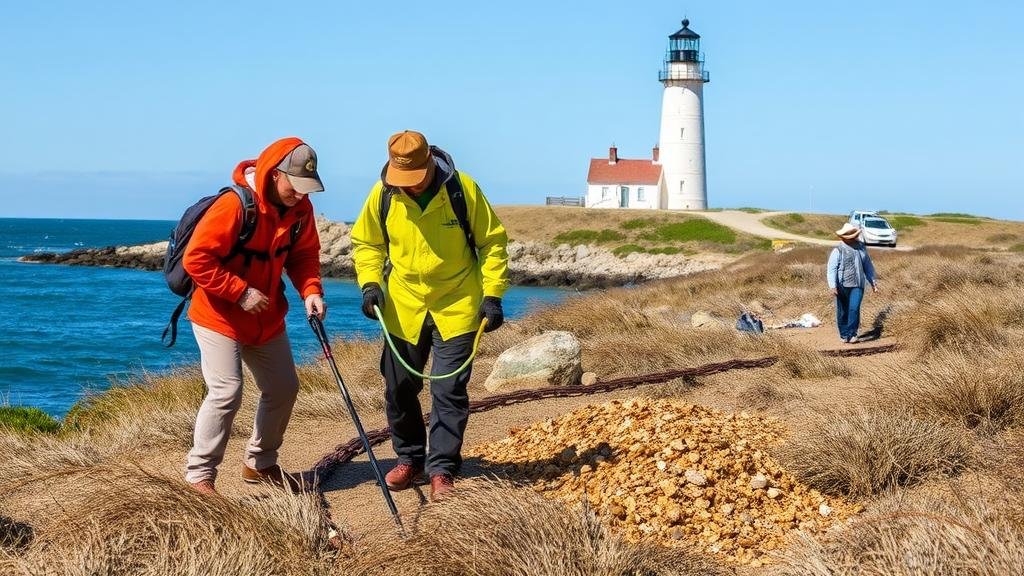Detecting for Maritime Gold in Historic Lighthouse Grounds
Detecting for Maritime Gold in Historic Lighthouse Grounds
Maritime gold–the term refers not only to literal gold, such as coins and jewelry, but also the rich heritage and artifacts that symbolize the history of seafaring communities. Historic lighthouse grounds provide a unique opportunity for treasure hunters and historians alike to uncover remnants of maritime culture. This article explores the techniques involved in detecting for such treasures, the historical significance of lighthouses, and the potential finds that can enrich our understanding of maritime history.
The Historical Significance of Lighthouses
Lighthouses have served as essential navigational aids for centuries, guiding seafarers safely through treacherous waters. United States alone has approximately 700 lighthouses, many of which are established on coastal lands rich with history. They were often the sight of various activities, including fishing, shipping, and even piracy, leading to the accumulation of both valuable and commonplace artifacts.
- Established as early as the ancient world, the first documented lighthouse was the Pharos of Alexandria (circa 280 BC).
- Many lighthouses were strategically located on busy shipping routes, making their grounds a convergence point for trade and economic activity.
The significance of these structures extends beyond their primary function; they are icons of maritime history and culture. As communities grew around these beacons, they interacted with seafarers who frequently passed through, which often led to the exchange of goods, cultures, and, notably, treasure.
Techniques for Detecting Maritime Gold
Detecting for maritime gold in lighthouse grounds necessitates a comprehensive understanding of various metal-detection techniques. e include ground-penetrating radar (GPR), metal detecting, and archaeological surveying.
Ground-Penetrating Radar (GPR)
Ground-penetrating radar is an advanced technique that employs electromagnetic pulses to create subsurface images. GPR can be particularly beneficial in areas where metal detectors might struggle, such as sandy or sediment-rich soils where artifacts are buried deep. This technology has been effectively used in archaeological sites around the world to unveil buried shipwrecks and associated treasures.
Metal Detecting
Metal detectors can efficiently locate coins, gold jewelry, and other metallic artifacts close to the surface. With improvements in technology, modern detectors offer advanced discrimination features to differentiate between valuable metals and common trash. For example, the Minelab CTX 3030, often favored by treasure hunters, allows users to navigate various terrains and conditions.
Archaeological Surveying
Incorporating archaeological methods enhances the probability of discovering significant artifacts. A systematic approach, marked by careful documentation of findings and context, ensures that every treasure unearthed adds to the historical narrative. Historical records, maps, and accounts of past lighthouse activity serve as guides to identify potential locations to explore.
Potential Findings and Their Impact
While the prospect of recovering gold and silver is tantalizing, the potential findings in lighthouse grounds can range from everyday items to significant historical objects.
- Shipwreck Materials: Items from sunken ships, such as cargo, tools, and personal belongings of sailors, can provide insights into maritime trade and daily life.
- Coins and Jewelry: Gold, silver, and valuable artefacts can result from shipwrecks or loss during a sailors journey.
- Historical Documents: Letters, logs, or maps that may have been preserved in time can offer clues about maritime navigation and trade routes.
Analysis of findings can enhance our understanding of cultural exchanges, trade relationships, and socioeconomic factors of maritime communities, leading to more accurate reconstructions of history. For example, artifacts recovered from Cape Hatteras Lighthouse have provided considerable data on trade patterns in the 19th century, illustrating the economic relevance of the area.
Ethical Considerations and Best Practices
When diving into the art and science of detecting for maritime gold, ethical considerations must be at the forefront. Many lighthouse grounds are protected historical sites, and laws such as the Archaeological Resources Protection Act govern what can and cannot be removed. It is imperative that treasure hunters respect these laws and work with local historical societies to ensure proper practices are followed.
- Seek permission from governing bodies before beginning any excavation or metal detecting.
- Report significant finds to local museums or institutions, enhancing public knowledge and appreciation of maritime heritage.
- Participate in community cleanup events to preserve the integrity of historic sites.
Conclusion and Actionable Takeaways
Detecting for maritime gold in historic lighthouse grounds is a rewarding endeavor that can yield remarkable finds and deepen our understanding of maritime history. Utilizing a combination of advanced technology and ethical practices, treasure hunters can explore these storied sites. Whether you are a hobbyist or an experienced archaeologist, the potential for discovery is immense, offering insights into the past that can enrich modern understanding of our maritime heritage.
As you approach your next undertaking, remember to:
- Research the historical context of the lighthouse grounds you wish to explore.
- Use advanced detecting tools and methods effectively.
- Engage with local historian and archaeological communities to promote responsible practices.
Embark on your maritime treasure hunt responsibly; the sea has countless stories to tell, buried just beneath our feet.


